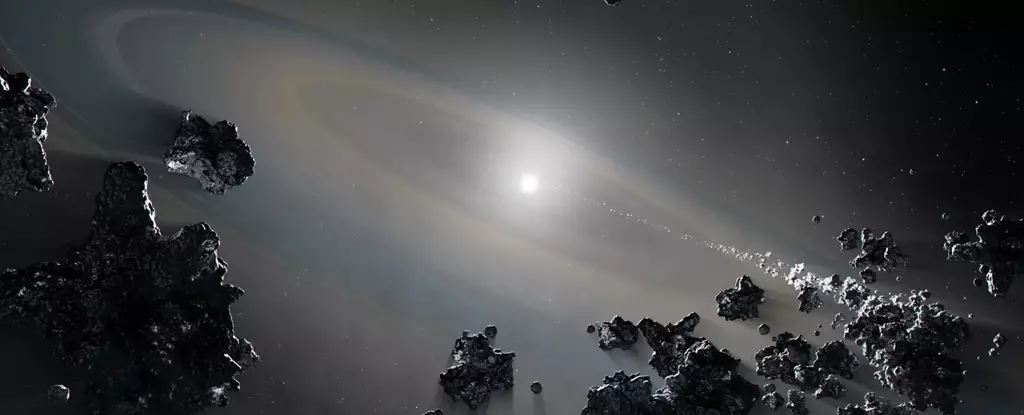When it comes to exoplanets, astronomers have made significant findings in recent years. From discovering exoplanets orbiting distant stars to identifying rocky debris disks around white dwarf stars, our understanding of the cosmos continues to evolve. However, one question still lingers: Are there terrestrial, Earth-like planets orbiting white dwarfs? In this article, we dive deep into the research conducted by scientists and unravel the mystery of white dwarf planets.
White dwarfs are the remnants of once larger main sequence stars, similar to our Sun. As these stars age, they expand and become red giants. Eventually, they shed their outer layers, leaving behind a planetary nebula. After thousands of years, all that remains is a white dwarf, small in size but incredibly dense and massive compared to Earth. Despite the absence of fusion, white dwarfs still emit residual heat, creating the potential for habitable zones.
The Plight of Planets
When a star evolves into a red giant, the planets orbiting it face a perilous fate. Some planets may be consumed by the star, while others are torn apart by tidal disruption. The presence of debris disks surrounding certain white dwarf stars provides evidence that planets were destroyed during the star’s red dwarf stage. However, in 2020, researchers made an astonishing discovery – an intact Jupiter-mass planet orbiting the white dwarf WD1054-226. This finding opens up the possibility of more white dwarf planets hiding in the universe.
The Rarity of Rocky White Dwarf Planets
A recent paper by David Kipping, an Assistant Professor in the Department of Astronomy at Columbia University, explores the scarcity of rocky white dwarf planets. Titled “The giant nature of WD 1856 b implies that transiting rocky planets are rare around white dwarfs,” the paper delves into the dynamics of white dwarf exoplanets. While white dwarfs have small habitable zones, planets within these zones could potentially support life. Despite the abundance of small terrestrial planets detected in rocky debris disks, intact rocky planets in habitable zones remain elusive.
The first confirmed white dwarf planet, WD 1856 b, holds both excitement and concern. This planet, with a massive 13.8 Jupiter masses, challenges the hypothesis that terrestrial planets dominate the white dwarf exoplanet population. The discrepancy between the distribution of detected exoplanets and the actual exoplanet population arises from the inherent biases of each detection method. Although the discovery of WD 1856 b appears improbable, it serves as a stark reminder of the limitless possibilities in our vast universe.
Searching for Answers
To reconcile the evidence for small planets with the detection of WD 1856 b, astronomers propose two possibilities. Firstly, the distribution of white dwarf planets may follow a different pattern, with small rocky planets and massive gas giants coexisting. Alternatively, the detection of WD 1856 b could be a statistical anomaly. With only one data point, more research is necessary to reach conclusive answers. The rarity of WD 1856 b-sized exoplanets, calculated at 0.37 percent, highlights the need for extensive observations over time.
Continuing the Quest for Terrestrial Planets
Despite the uncertainties, the search for terrestrial planets around white dwarfs must persist. The existence of multiple rocky debris disks strongly suggests the presence of small rocky planets in the habitable zones. By harnessing advanced techniques and technology, astronomers can uncover the true population of planets around white dwarfs. These stabilized and long-lived stars provide a unique opportunity for the detection of Earth-size planets and the study of their atmospheres, potentially revealing signs of life.
While the discovery of WD 1856 b raises intriguing questions, scientists have yet to establish a definitive conclusion regarding the rarity of rocky white dwarf planets. It is essential to avoid premature judgments and continue exploring the vast cosmos. As white dwarf exoplanet science enters its early stages, the potential for finding Earth-like worlds around these stellar remnants offers new hope for habitability and the proliferation of life in the Universe. Through perseverance and further investigations, humanity may one day uncover the secrets hidden within the enigmatic realms of white dwarf planets.


Leave a Reply